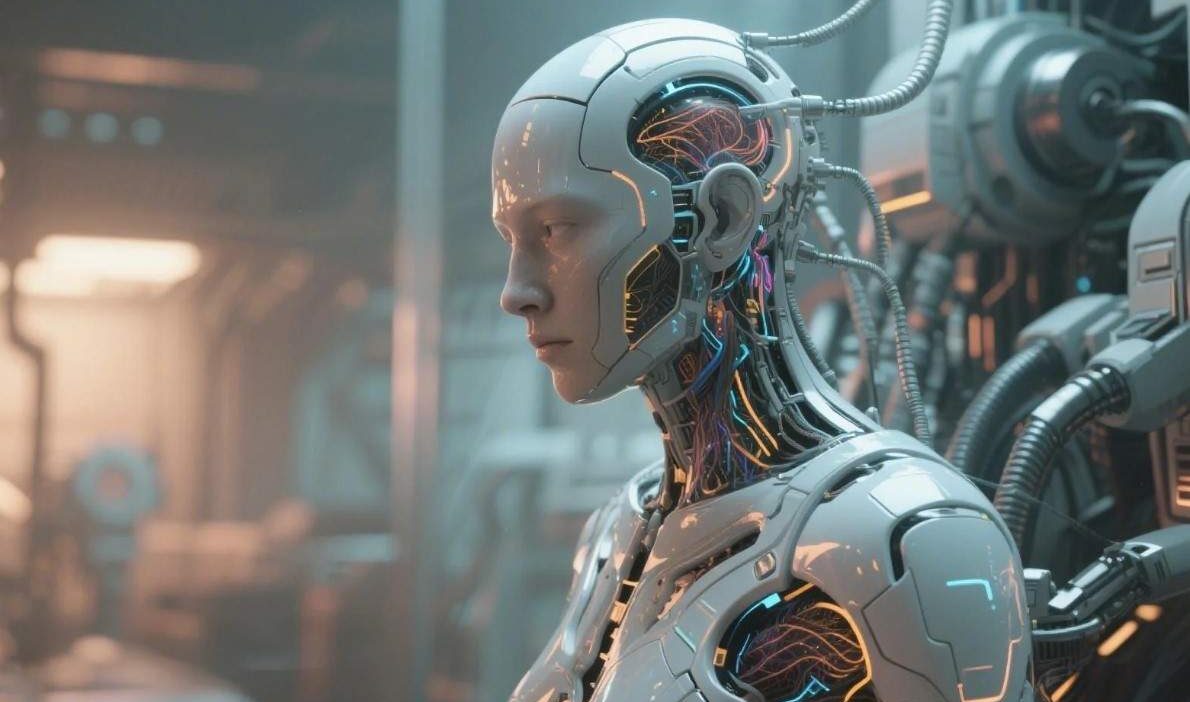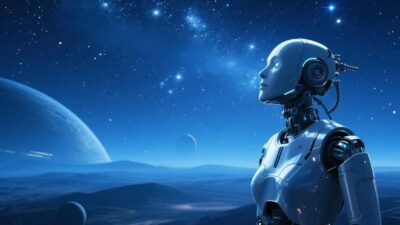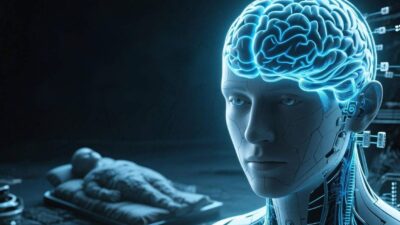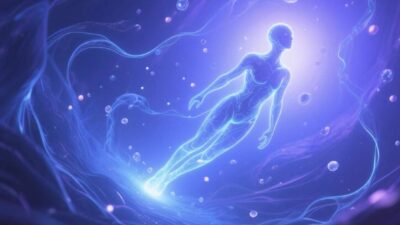The Unfolding Story of “Human” – From Biology to Binary
Imagine a child born in 2140. Her eyes glow faintly with embedded nanobots that enhance her vision. Her brain interfaces directly with the cloud, accessing knowledge instantly. She heals in days from injuries that would have killed her great-grandmother. When she introduces herself, she says, “I’m Lila—part human, part machine, fully me.”
This isn’t science fiction. As genetic engineering, neural interfaces, and artificial intelligence blur the lines between biology and technology, we’re entering an era where “human” is no longer a fixed category. It’s evolving. This transformation raises a profound question: What does it mean to be human when our bodies, minds, and even identities can be redesigned?
From the first homo sapiens painting on cave walls to today’s debates over CRISPR and brain uploads, humanity has always defined itself through its ability to adapt, create, and transcend. Now, as we reach the threshold of post-humanity, we must confront a radical truth: The “essence” of being human may not lie in our biology, but in our capacity to reimagine what it means to be.
Redefining “Human” – Beyond Biology and into the Hybrid
For millennia, humanity’s identity was rooted in biology: We are carbon-based, mortal, and bound by the limits of our bodies. But today, technology is rewriting this script.
The Rise of the Cyborg
Cyborgs—beings that blend organic and synthetic parts—are no longer confined to sci-fi. Cochlear implants restore hearing, retinal prosthetics grant vision, and exoskeletons enhance strength. These tools aren’t just medical aids; they’re extensions of human potential. As bioethicist Donna Haraway argues, “We are all cyborgs now,” blurring the line between “natural” and “artificial.”
Take the case of Neil Harbisson, a “cyborg artist” with an antenna implanted in his skull that translates colors into sound. For Harbisson, his antenna isn’t a tool—it’s part of his identity. “I don’t see myself as a human with a device,” he says. “I see myself as a cyborg.”
Genetic Engineering: Rewriting the Code
CRISPR-Cas9 and gene editing technologies allow us to modify DNA with unprecedented precision. Parents might soon choose traits for their children—height, intelligence, or disease resistance. In 2018, the world’s first CRISPR-edited babies were born, sparking debates about “designer humans.”
But genetic modification isn’t just about perfection. It’s about survival. Scientists are editing genes to combat malaria, HIV, and aging. If we can eliminate genetic diseases, extend lifespans, and enhance physical traits, what does that say about the “flaws” we once called “human”?
AI and the Merging of Minds
Artificial intelligence is no longer a tool—it’s a collaborator. Brain-computer interfaces (BCIs) like Neuralink connect human brains to computers, enabling direct communication with AI. Imagine a student using a BCI to download knowledge from the internet, or a musician composing symphonies with AI co-creators.
As AI grows sophisticated, some predict “mind uploading”—transferring human consciousness into digital substrates. Philosopher Nick Bostrom argues this could lead to “superintelligence,” where human minds merge with AI to become something far more powerful. But if our minds are no longer confined to our brains, are we still “human”?
The Dimensions of Post-Human Identity – Biology, Cognition, and Existence
Post-human identity isn’t a single trait—it’s a mosaic of biological, cognitive, and existential shifts.
Biological: Mortality, Enhancement, and the “Natural”
Mortality has long defined the human condition. We grieve because we know loss; we cherish life because it’s finite. But technologies like anti-aging research, organ regeneration, and cryonics (freezing bodies for future revival) challenge this.
If we can live indefinitely, how does that change our relationship with purpose? Philosopher Bernard Williams warned that immortality could lead to existential boredom—a life without urgency or growth. Yet others, like transhumanist Aubrey de Grey, argue that extending healthspan (not just lifespan) allows us to live richer, more meaningful lives.
Cognitive: Intelligence, Consciousness, and the “Self”
Human identity is deeply tied to our minds. What happens when we enhance cognition with AI, or transfer consciousness to machines?
Consider “brain emulation”: Scanning a brain at the cellular level and replicating it in a digital substrate. If successful, this could create a “digital self” that thinks, feels, and remembers exactly like the original. But is this a continuation of the self, or a copy? Philosopher Derek Parfit’s “teletransportation paradox” asks: If you’re destroyed and recreated atom-for-atom, are you still “you”? For post-humans, this question becomes urgent.
Existential: Soul, Meaning, and the “Other”
At the core of human identity is the search for meaning. Religion, art, and philosophy all grapple with questions like: Why are we here? What gives life purpose?
Post-humanity forces us to expand these questions. If we merge with AI, do we lose our “soul”? If we create synthetic beings, do they have souls? Artist Refik Anadol uses AI to generate “dreamscapes” that challenge our perception of creativity. “Is the AI creating, or am I?” he asks. “The line is dissolving—and that’s beautiful.”
The Ethical and Philosophical Quandaries – What Do We Risk?
The post-human journey is exhilarating, but it’s fraught with risks.
Loss of Authenticity: Who Am I, Really?
If we edit our genes, upload our minds, or merge with AI, do we lose the “authentic” self? Philosopher Charles Taylor argues that our identity is rooted in a “narrative”—the story we tell ourselves about who we are. If we rewrite that story through technology, we risk becoming strangers to ourselves.
A student who enhances her memory to ace exams might lose the struggle that built resilience. A survivor who erases traumatic memories might lose the strength that comes from overcoming adversity. As writer Jodi Picoult warns, “What we remember defines us. What we choose to forget defines us too.”
Inequality and Exclusion: The New Caste System
Access to post-human technologies could deepen inequality. If only the wealthy can afford gene edits, neural implants, or mind uploads, society might split into “enhanced elites” and “natural have-nots.” This echoes historical struggles for civil rights, where access to opportunity defined one’s humanity.
As bioethicist Ruha Benjamin notes, “Biotechnology could become the new Jim Crow.” We must ensure these tools are accessible to all—or risk creating a world where “human” is a privilege, not a right.
Erosion of Empathy: The Cost of Perfection
If we eliminate suffering through technology, do we lose our capacity for empathy? Psychologist Paul Bloom argues that “emotional numbing” is a real risk. If we no longer experience pain, loss, or imperfection, we might struggle to connect with others or appreciate beauty.
Consider a world where everyone is “optimized” for happiness. Would we still value art that explores darkness? Would we still fight for justice if suffering is eradicated? As author Margaret Atwood writes, “Better never means better for everyone… It always means worse, for some.”
Redefining Humanity – The Post-Human Ethos
The post-human era isn’t about replacing humanity—it’s about expanding it. To thrive, we need a new ethos that embraces our hybrid nature.
Embrace Hybridity as a Strength
Being post-human doesn’t mean rejecting our biology; it means integrating it with technology. A cyborg isn’t “less human”—they’re more: a fusion of organic resilience and digital precision. As Haraway’s “Cyborg Manifesto” declares, “We are all chimeras, theorized and fabricated hybrids of machine and organism.”
Prioritize Agency and Consent
Who decides what enhancements to pursue? Autonomy must guide post-human development. Individuals should have the right to choose their bodies and minds, free from coercion. This includes protecting vulnerable populations—from children to refugees—from being pressured into “improvement.”
Protect Collective Memory and Identity
Shared memories and stories bind societies together. As we edit individual identities, we must preserve collective ones. This means safeguarding cultural heritage, historical truth, and the voices of marginalized groups who define what it means to be human.
The Human Spirit in a Post-Human World
What does it mean to be human? It’s not our biology, our intelligence, or even our mortality. It’s our capacity to grow, to create, and to find meaning—even when our bodies and minds are transformed.
Post-human identity isn’t a threat; it’s an evolution. It challenges us to reimagine what’s possible, to ask deeper questions, and to build a world where technology serves humanity, not the other way around.
As we stand at this crossroads, let’s remember the words of anthropologist Margaret Mead: “Never doubt that a small group of thoughtful, committed citizens can change the world.” In the post-human era, that change starts with us—redefining what it means to be human, one innovation at a time.
Join the conversation at AIDNESS. Should we embrace post-human technologies unconditionally, or set strict limits? Can we retain our humanity while merging with machines? Share your thoughts—we’re all shaping the future of what it means to be “human.”
“The most beautiful thing about humanity is its ability to reinvent itself.” – Yuval Noah Harari



